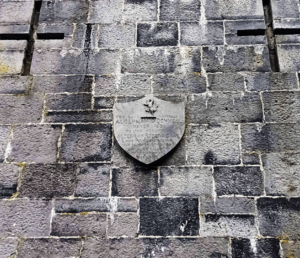Robert Cane facts for kids
Dr. Robert Cane (1807–1858) was an important doctor and politician from Kilkenny, Ireland. He was a member of groups like the Repeal Association and the Irish Confederation, which worked for change in Ireland. He became a doctor in 1836 and was even the Mayor of Kilkenny twice!
Robert Cane was a model for a character in a famous book called Knocknagow by Charles J. Kickham. He also influenced other important Irish figures like James Stephens and Charles Kickham. He exchanged letters with Thomas Davis and was visited by famous people like Charles Gavan Duffy and Thomas Carlyle.
Contents
Robert Cane's Early Life and Education
Robert Cane was born in Kilkenny, Ireland, in 1807. He went to school in his local area. After school, he worked for a while helping a pharmacist.
Later, he decided to study medicine. He went to Trinity College Dublin and the Royal College of Surgeons in Ireland. While at Trinity College, he became interested in student politics. He attended meetings about important national issues happening at the time.
In 1832, a serious illness called cholera spread through Kilkenny. Robert Cane returned home to help people who were sick. He then moved to Edinburgh, Scotland, to continue his medical studies. In 1836, he earned his M.D. degree from Edinburgh Medical School.
A Doctor and Politician in Kilkenny
After finishing his studies in Edinburgh, Dr. Cane came back to Kilkenny. He started his own medical practice in the city. He also became very involved in national issues and local politics. He was good friends with the writer John Banim.
Dr. Cane joined Daniel O'Connell's Repeal Association. This group wanted to repeal, or cancel, the Act of Union. This Act had joined Ireland and Great Britain. In 1840, Dr. Cane hosted a special dinner for Daniel O'Connell when O'Connell visited Kilkenny.
In 1844, Robert Cane was elected Mayor of Kilkenny. This was a very important job in the city.
Political Involvement and Challenges
In 1847, William Smith O'Brien and others left the Repeal Association. They started a new group called the Irish Confederation. Robert Cane joined this new group. However, he did not agree with all their ideas, especially about using violence. Because of this, he did not take part in the 1848 rebellion.
Even though he wasn't involved in the fighting, Dr. Cane was arrested. He was held in Kilkenny Gaol on July 29, 1848. The government had temporarily stopped a law called Habeas Corpus, which usually protects people from being held without charge. This meant Dr. Cane was in prison for a long time.
After he was released, the people of Kilkenny elected him mayor again! On February 19, 1849, he helped start a group to study history and old things in Kilkenny. This group became the Kilkenny Archaeological Society, and he was elected its chairman on April 3, 1849.
Later Life and Legacy
In 1853, Dr. Cane started the Celtic Union in Kilkenny. This was a group that focused on writing and had strong political ideas. They wanted to publish books and articles about Irish history. The Union even produced its own magazine called 'The Celt,' and Dr. Cane was its editor.
Sadly, Dr. Robert Cane died on August 16, 1858, from a lung illness called consumption (now known as tuberculosis). He is buried in St. John's Graveyard, very close to his friend John Banim.
After he died, in 1859, the Celtic Union published some articles he had written. These articles were about the Williamite and Jacobite Wars in Ireland.


